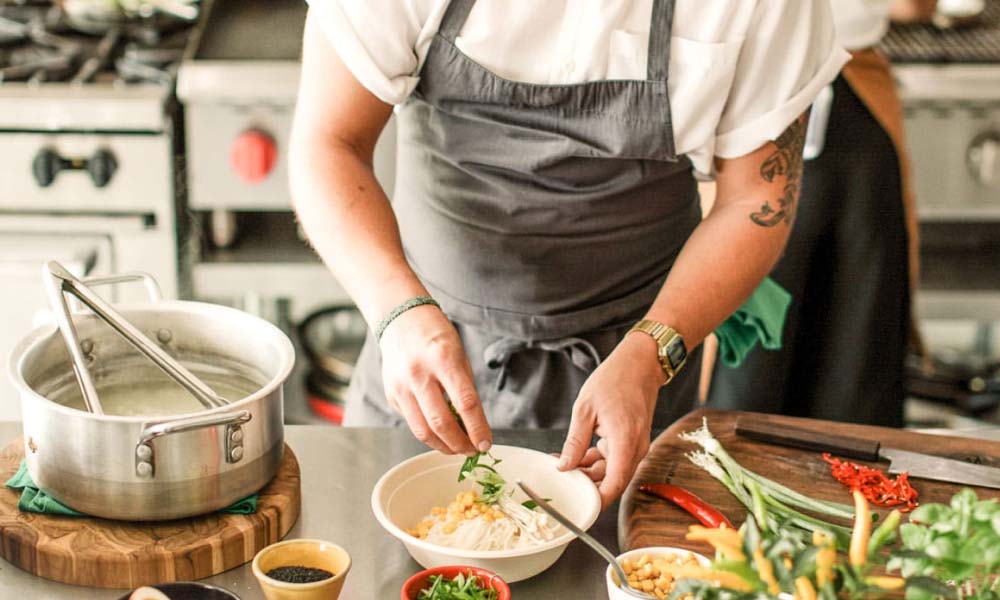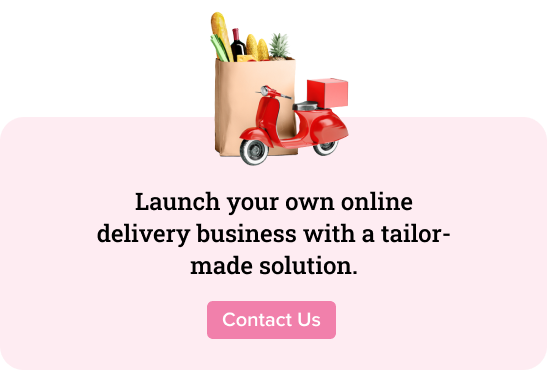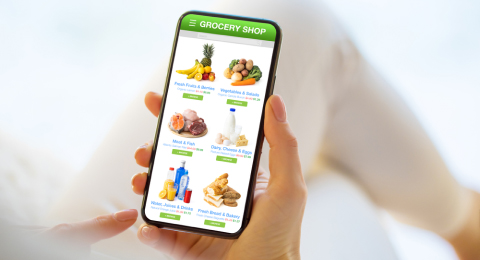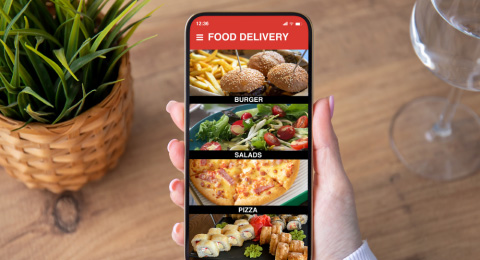
The food delivery business is one such industry that is devastated by COVID 19 pandemic. As the social distancing is going to continue, it’s going to make small food chains unviable. The COVID 19 outspread has reduced revenue flows, which might not help them to cover their rents. But there is great hope for the food ordering and delivery business with “cloud kitchen.” These days most restaurant businesses have started using cloud kitchen overnight to understand its importance for their business.
- What is Cloud Kitchen?
- Ghost Kitchen: Why it’s Better Option to Choose?
- Cloud Kitchen Business Models: Learn to Opt for Best for Your Business Solution
- How to Start a Cloud Kitchen Business: Explore All the Basic Requirements Here!
- Decoding the Virtual / Cloud Kitchen Business: Learn to Ensure Success and Growth!
The on-demand food ordering market is estimated to grow by $35 billion to $365 billion by 2030. Restaurants’ food delivery sales are increasing three times faster than the rate of on-premises revenue reported by qsrmagazine study. Due to high rentals and growing margins, restaurant owners are moving towards the more economically profitable, they have started investing in the Cloud Kitchen business.
USB projects that the online food ordering and delivery marketplace globally comprises online meal kit delivery giants like HelloFresh, JustEat, GrubHub, Deliveroo, etc. While online grocery delivery services like Instacart in the US, Ocado in the UK, and many more.
After the survey on 13000 customers and analyzing more than 350 apps globally, the UBS report shows that its base case for the industry is growing dramatically. The gross merchandise volume has increased and reached around “US$365bn, implying around 20% GMV CAGR for the online food delivery sector till the end of the year 2030.
What is Cloud Kitchen?
Also known as ghost kitchen, dark kitchen, satellite kitchen, virtual restaurant. It’s a delivery-only restaurant format that enables no dine-in facility. Ghost Kitchen / Cloud Kitchen mostly accept orders online and rely primarily on online food aggregators such as Zomato, Swiggy, Ubereats, and mobile apps/websites to accept orders online.
Cloud kitchen demand low investment and risk while offering a high-profit format. The direct cost of setting up a cloud kitchen is relatively lower compared to starting or establishing a traditional takeaway or dine in restaurants. It enables restaurants with considerable opportunities to experiment with different formats, concepts, and much more, which gives birth to numerous food delivery business models.
Check everything about the UberEats business model to understand its working and operating strategy. Like its business model, many food ordering and delivery businesses have developed their business model with a minor or significant change in it.
Ghost Kitchen: Why it’s Better Option to Choose?
Cloud kitchen are commercial facilities helping to offer food specifically to customers on their demand. They don’t require a brick-and-mortar area consisting of shared kitchen space with staff that prepares meals and delivers to customers right at their place. On-demand ordering and delivery services are not new; in 2018, American consumers prefer to use third-party delivery services to place about $10.2 billion in food orders.

The above-listed number shows an exciting turnabout; delivery services begin to supply on-demand services to restaurants, while cloud kitchen help restaurants and food chains perform the task much faster than ever before. The appearance of the guest/ cloud kitchen is dramatic and sudden. It has an emergent category with a confusing array.
“In New York alone, a brick and mortar restaurant costs around $1 million to $1.5 million to establish and launch the business, while starting a cloud kitchen only cost around $100,000.”
Cloud kitchen is perceived as one of the cool phenomena ensuring to earn tons of money if you consider the right business model and strategy to start your business. You can opt for an advanced mobility solution offered by Elluminati Inc, guaranteeing excellent customer support for your business in today’s competitive business market.
Cloud Kitchen Business Models: Learn to Opt for Best for Your Business Solution
With the ever-growing technology and the rising competition, the food space has been volatile for a specific period. The growing demand for on-demand food delivery and high real-estate costs results in thinning margins that led to the birth of the cloud kitchen. You can also follow the same concept for your business or opt for an e-delivery solution for your business, helping you achieve success and leverage competitive edges.
Goldstein Research represents that the global cloud kitchen market in 2018 was valued at USD 700 Million and estimated to jump and grow at a 17.25% CAGR during the forecast period 2017 and 2030. Today, many restaurateurs and food chain businesses are raving into the cloud kitchen concept; they try to figure out its intricacies.
Cloud kitchen is considered a trendy topic for most businesses; it is regarded as a smarter way to run the food ordering and delivery business in today’s demanding market. The business model of cloud kitchen has undergone through variation and has diversified into different categories such as:
- Standalone or Single-brand Cloud
- Virtual Restaurants
- Multi-brand Cloud Kitchen or Virtual Restaurant
- Shared Kitchen Spaces
- Aggregator-managed Cloud Kitchen
- Operator-managed Cloud Kitchen
How to Start a Cloud Kitchen Business: Explore All the Basic Requirements Here!
The cloud kitchen enables restaurants to launch more than one brand through the same kitchen infrastructure. Multi-brand cloud kitchen encourage the food chains and restaurateurs to utilize their kitchen infrastructure and resources to run multiple brands without hassle. For instance, which satisfies food lovers’ hunger through food delivery apps in Southeast Asia and offers them Mexican food items by starting a different brand from the same delivery in the kitchen.
A cloud kitchen plays a mandatory part, especially when it comes to accepting orders through online ordering systems, and provides impressive dining facilities. They mainly have a base kitchen that delivers fresh and mouth-watering meals to customers’ places. Cloud kitchen might own their online ordering app and website with the following fantastic flow. Check the app graphical visuals to have insight into the flow of on-demand service apps, and it’s overall working.
The primary source of revenue for internet restaurants is from various food ordering platforms like FoodPanda, Swiggy, Zomato, etc. Hence it becomes vital for restaurants to build a check-in system that keeps systematic track of the deliveries and the volume generated from different platforms. Adding and measuring orders from other ordering systems becomes relatively more comfortable and straightforward through the Clout Kitchen. However, there are some essential aspects which you have to consider to address all the requirements efficiently.
Location & Property
Location and property are the main differentiators between the conventional cloud kitchen and restaurant. A cloud kitchen does not need a high property position. It results in reducing the cost of opening a kitchen traditionally. The cloud kitchen is a relatively inaccessible area with high demands. Market backsides, residential areas, unused parking, etc. can be considered a perfect cloud kitchen spot. You can go for a shared kitchen option guaranteeing to reduce initial investment to a great extent.
Licenses
When you are thinking of opening a cloud kitchen, it becomes essential for you to obtain proper certificates and licenses. Getting the licenses and certificates for your cloud kitchen can help you stay far behind from legal issues and difficulties. However, as customers can’t visit the outlets by themselves to test food preparation ways, sanitation safety, etc., proper licensing gives them a sense of satisfaction. Make sure to promote these with your marketing campaigns and business websites, helping you convey to your customers that you offer them high and fresh food quality. Different types of licenses you can opt for:
- Trade License
- Fire and Safety License
- Additional Licenses
Trademark registration also plays a vital role in cloud kitchen businesses. It helps them develop a unique presence in the market without any hassle; they can build their logo, wordmark, name, and patterns to build a business identity.
Kitchen Equipment & Packaging
The kitchen equipment mostly depends on the different types of cuisine you offer to your ideal customers. The essential equipment required is a stove, oven, knives, refrigerator, etc. Packaging plays a very critical role when it comes to food ordering and delivery business. No matters how tasty and mouth-watering meals you offer to the food lovers.
If your food product packaging is not proper, it will destroy the whole consumer experience and generate a terrible experience. Most of the time, packaging depends on the food type, which is served to customers. Cloud kitchen businesses can use plastic containers, spoons, bottles, and much more to ensure adequate food packaging.
Staff
Cloud kitchen doesn’t demand many people as there is an absence of a House Front. You need at least 2 or 3 professionals who can prepare and deliver food right away to the customers’ place; this makes it easier for you to open a shop without investing more money. When you have several brands, the same chef can help you prepare food for various brands.
Moreover, when it comes to starting a cloud kitchen, then starting with a small staff can be more beneficial for you. You can recruit more staff once your income order volume increases.
Marketing and Generating Online Orders
Once you finish your work with the kitchen and staff set up, it’s time to market your cloud business to ensure massive online order generation for your company. However, a cloud kitchen does not have dine-in facilities; it entirely relies on online orders. Hence it becomes vital for businesses to promote their food delivery brand; this is more important at least at the initial level.
- Listing Your Cloud Kitchen Online
- Promoting Your Cloud Kitchen On Aggregators Sites
- Focus on Social Media Marketing
- Search Engine Optimization (SEO)
- Invest in Loyalty Programs, SMS & Email
Decoding the Virtual / Cloud Kitchen Business: Learn to Ensure Success and Growth!
While cloud kitchen / Virtual restaurant involves high profit and low risk, individuals must focus on winning the competition ahead and make profits. The Cloud kitchen is the next theme for the food ordering and delivery business. If you are planning to boost your business growth, then get in touch with us.
The cloud kitchen is the wiser and safer alternative for your delivery business, helping you make it future proof. Cloud kitchen formats are one of the most profitable formats, but you need to stay on your toes to achieve growth and success in your business field. Follow the above-listed tips to increase your online restaurant business sales.















